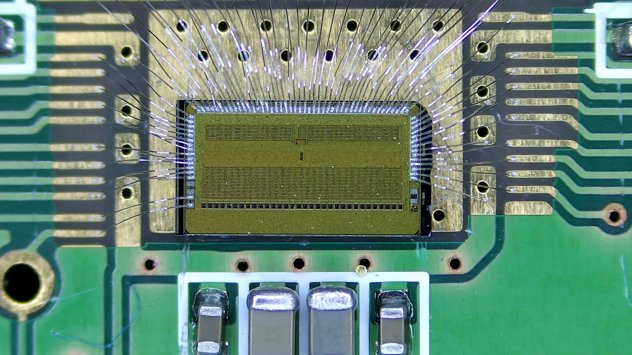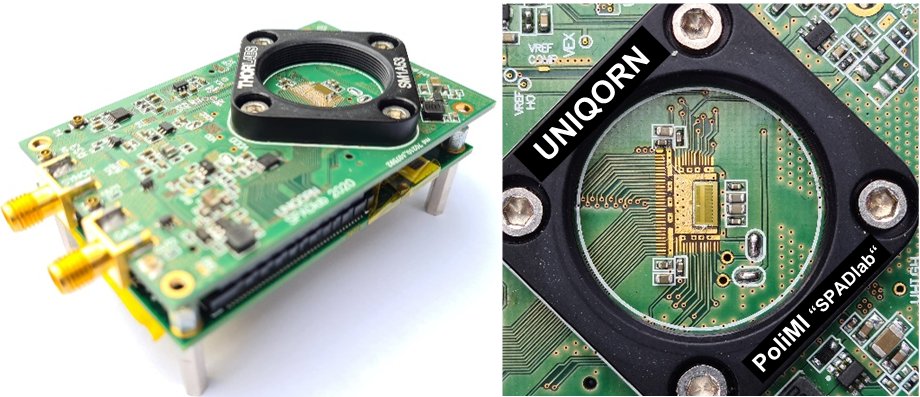Arrays of Single-Photon Avalanche Diodes to accurately count and time-tag single photons and few-photon coincidences
Researchers at the “SPADlab” of Politecnico di Milano, Italy, are developing microelectronic chips containing SPAD (Single-Photon Avalanche Diode) detectors and on-chip electronics, able to detect individual visible and near-infrared photons and to provide a “click”, i.e. a digital pulse, for every detection. By counting the number of detected photons in well-defined time slots, these detectors can measure the time-dependent intensity of very faint incoming optical signals (down to the sub-microsecond time-scale); by time-tagging each photon with its arrival time, these chips can reconstruct the waveform of very fast optical events (down to the picosecond resolution). The chip provides a linear array of 32 independent photon channels, to be coupled with the PolyBOARD substrates with waveguides, developed by the partner HHI, for enabling advanced quantum applications of many the other UNIQORN project partners, with very compact dimensions and on-chip processing. In fact, the chip provides further information about which waveguide channel emitted a photon and also if and when a coincidence event with 2, 3, or 4 concurrent photons were detected within a few nanosecond time-window, among the 32 waveguides.


at the top: 32-channels SPAD array chip (with 4.2 mm x 2 mm dimensions) mounted on an electronic board (the 32 SPAD detection channels are the small dark squares at the bottom of the chip).
bottom left: Electronic board for driving the SPAD array chip (at the top) and performing application-dependent data-processing on detected photons. bottom right: 32-channels SPAD array chip mounted on an electronic board for tests and data-processing on the 32 independent waveguide channels.